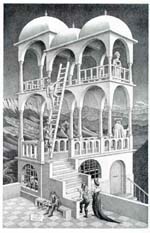
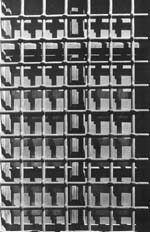
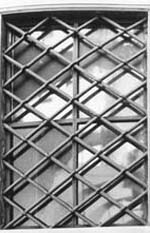
Figure 54
Figure 55a
Figure 55b
There is another nice example in Escher's work where he uses the joints instead of the tiles. And this brings us to the third way of dealing with tiling-lattices: we can split up the tiling-lattice into a set of congruent bars in which each bar is composed of a connected set of joints. For several reasons, I divide this group in two categories: a) grids with crossing bars, and b) grids without crossingbars.
Escher's print Belvedere provides an example in the first category. If you look closely at the lower windows of the building, you see iron window-lattices that are constructed with bars: horizontal bars are threaded through holes in vertical bars and vice versa (Figure 54a shows a close-up of one window). In Rome, where Escher lived for several years, you can find many examples of this kind of barred window. This is nothing special, you might think. But all the barred windows I have seen in Rome could easily be disassembled by just sliding the bars off each other. Several different systems are used; the photos in Figure 55 a,b shows a few. This can be dismantled by working around the center section, loosening the bars in each of the four directions until the mesh falls apart completely.
Yet when we look at Escher’s design (detail shown in Figure 56 a,b) it is obvious that this mesh will always stay in one piece. Escher made his own ‘impossible’ variation on this theme.
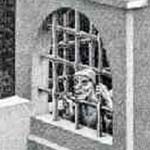
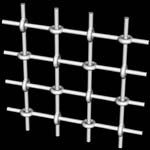
Figure 56a
Figure 56b